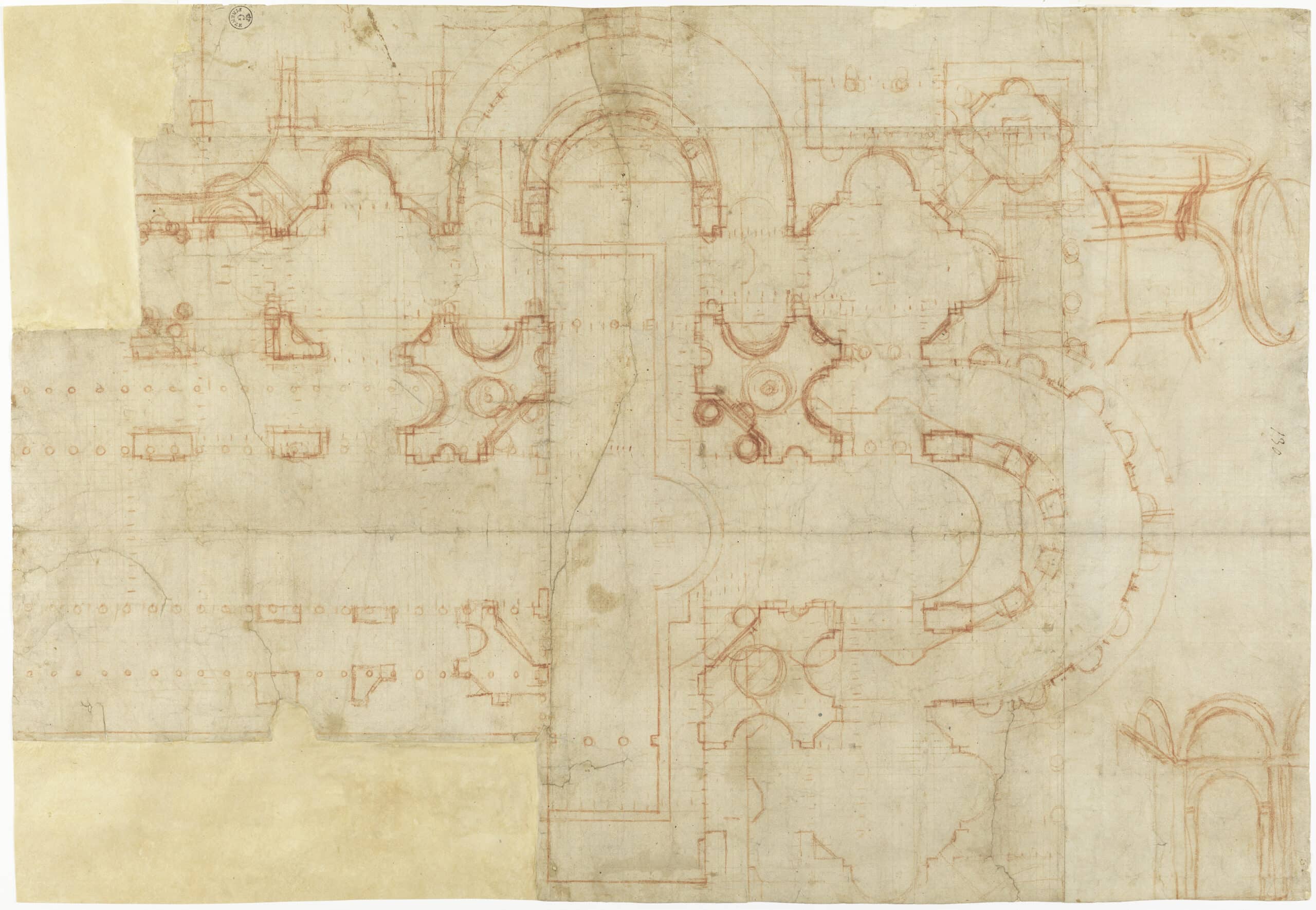DMJ – Grids and Squared Paper in Renaissance Architecture
The grid and the squared paper have played an important role in architectural practice, both in analysing and measuring what already exists (sites, monuments, etc.) and in organising and modularising the graphic development of the design process. The use of the square grid is generally linked to Greek civilization, mathematics, the city planning of Hippodamus of Miletus, and the square module of Hellenistic temples, but it is also intertwined with the Egyptian art, Roman centuriatio and the medieval ad quadratum composition.
In the early diffusion of squared paper in the Renaissance, the use of the grid was initially seen in artistic practices, associated with fabrics and tapestries. With the development of the theory of perspective, a primary shared operative framework was produced in which artists and architects experimented with the grid. Beyond these applications, gardeners adopted grids for the design of gardens and painters developed grid-based techniques and procedures to transfer and enlarge (and then morphologically transform) small sketches onto walls. In this sense, the grid constituted a methodological instrument shared by artists engaged in different fields and disciplines. Its use changed architects’ ways of thinking and practising, as any tool does. Indirectly representing the architects’ connection to proportional and dimensional matters of design, as well as to modern manufacturing processes (from movable type press to assembly line), the use of the grid contributed to the transition from an organic-anthropometric paradigm to a mechanical-mathematical one.



Exploring the origins of the use of squared paper in architecture, this article focuses on the Renaissance as a key moment in the rise of the grid as a proportional system that is posed against—but is also complementary to—both medieval and Vitruvian compositional procedures. After tracing the several uses of the grid back to early 15th-century applications, the author discusses—based on an analysis of materials held in the Uffizi—a group of architectural designs on squared paper from Bramante’s circle as a manifestation of this trend. A number of applications of the grid in the practice of 16th-century architects, occasionally connected to the geometrical motif of the labyrinth, are then described to demonstrate the developing use of squared paper in the design of military buildings, gardens and ‘extra-large’ projects, which thereby gradually lead to a flexible, universal system of design that will, in turn, promote the presence of the grid as an organising substrate.
Download the full article as a printable PDF
DMJournal–Architecture and Representation
No. 2: Drawing Instruments/Instrumental Drawings
Edited by Mark Dorrian and Paul Emmons
ISSN 2753-5010 (Online)
ISBN (forthcoming)
About the author
Fabio Colonnese is an architect and senior researcher at Sapienza University of Rome, Italy. His Ph.D. dissertation on the labyrinth and its manifold relationships with art, architecture, and city was published in Il Labirinto e l’Architetto (2006). He took part in major survey campaigns in Italy, Turkey and Armenia. His latest book is La Farnesina ai Baullari e la rappresentazione dell’architettura romana (Artemide, 2023).
For an informal and diverse selection of drawings from the Drawing Matter Collection in which the grid is differently present in architectural drawings, follow this link. As the organizer—not the tool—of form-making, the use of the grid makes an early appearance in a series of garden designs of the 18th century; at a startling moment in the 1960s, we see Superstudio transforming the grid into the subject of the drawings themselves.
Click here to receive updates about the journal, and future calls for abstracts.
